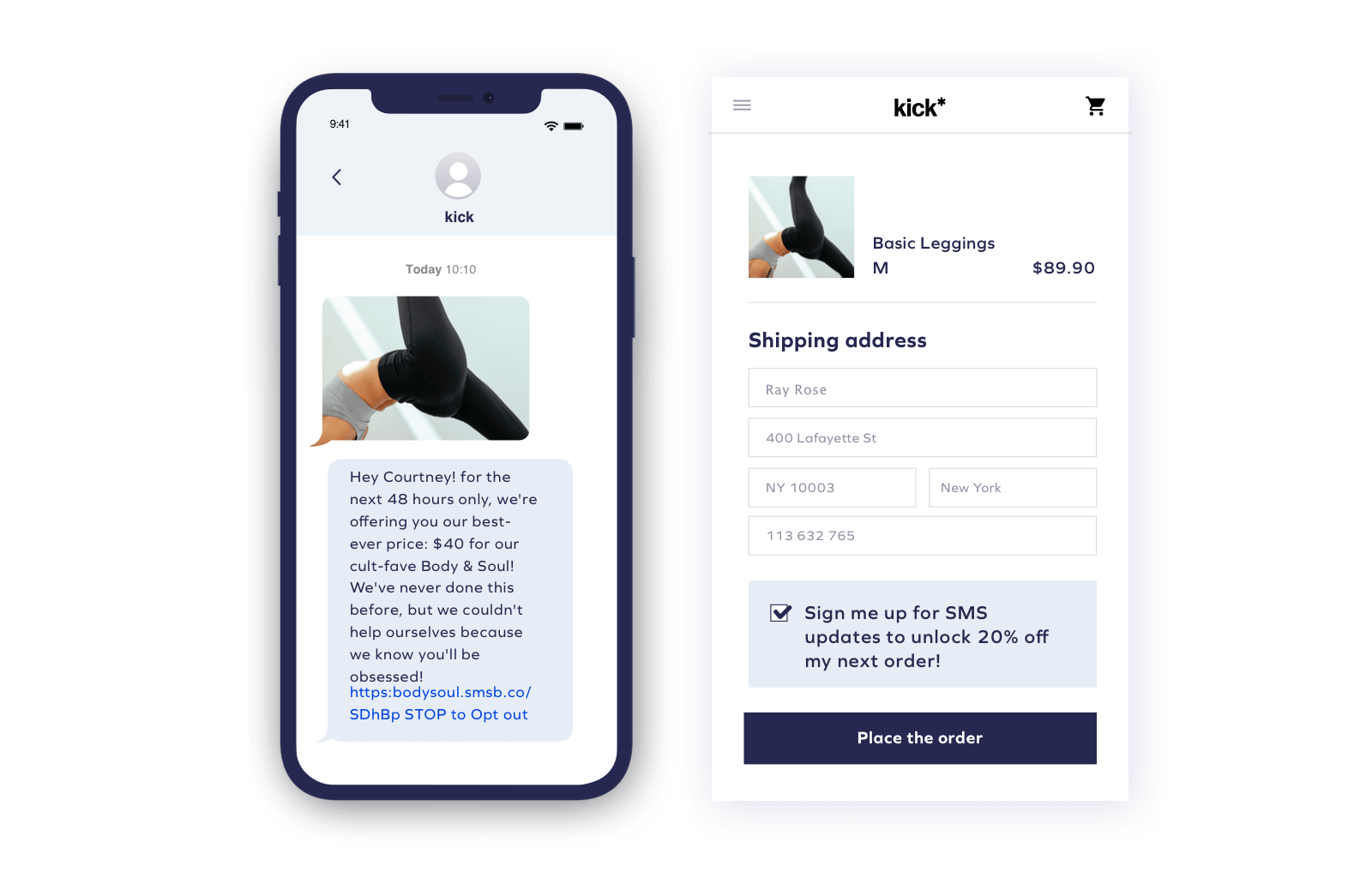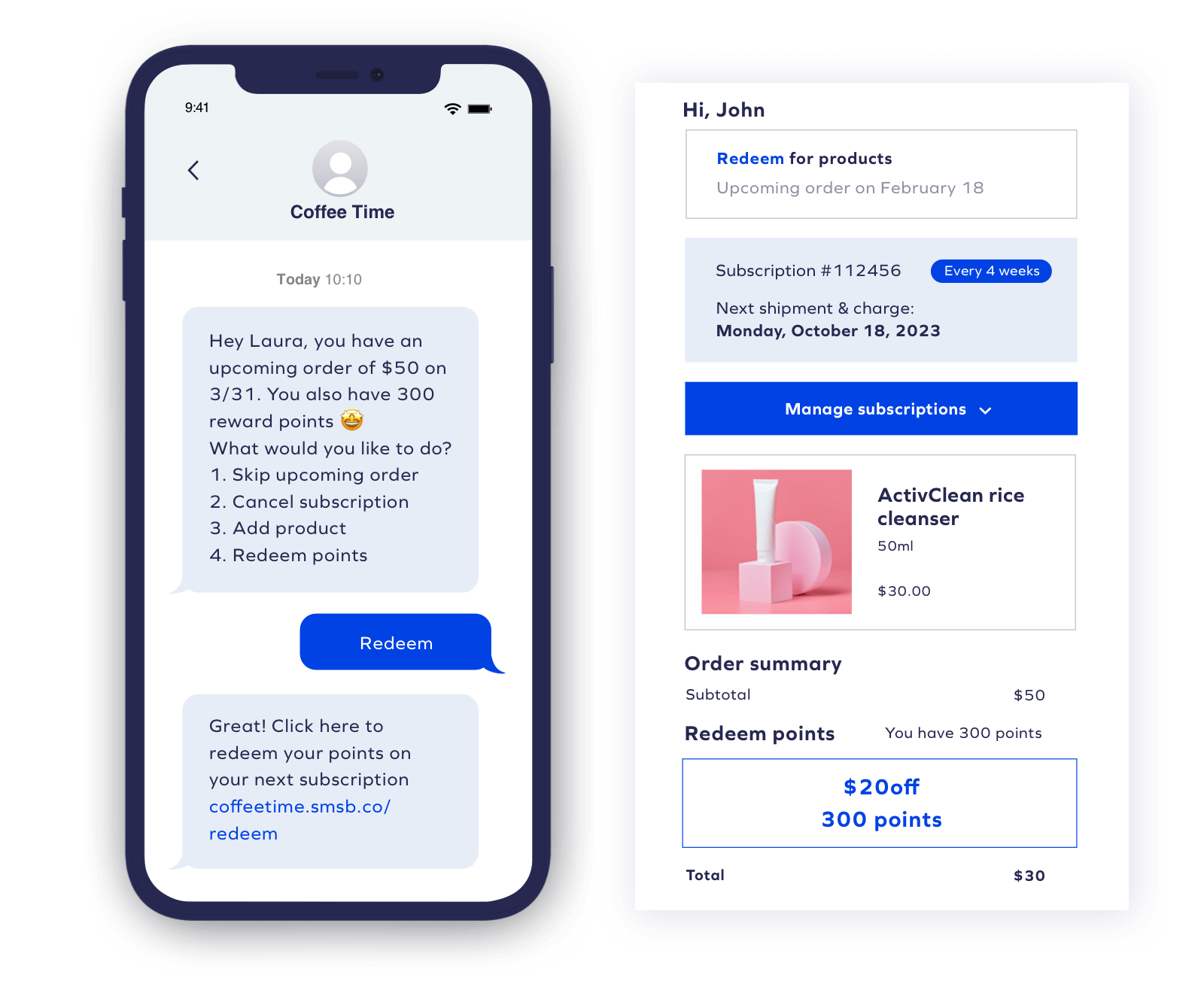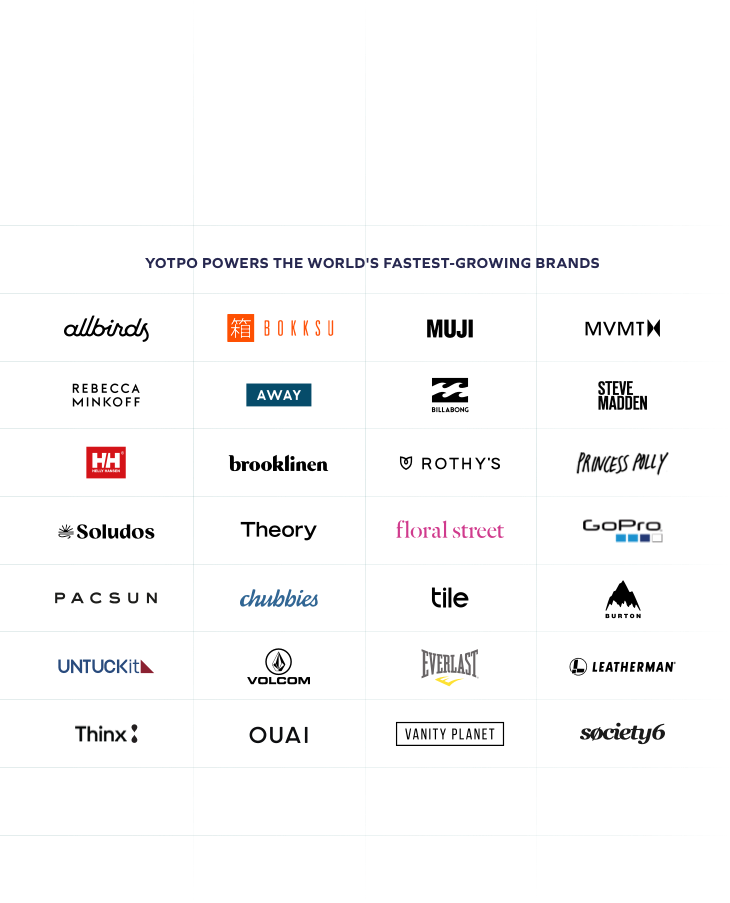As an eCommerce business owner, you know that acquiring new customers can be expensive and time-consuming. You’re also probably aware that retaining your existing customers is actually more important for long-term success; however, many brands are only just starting to make retention a top priority.
It’s time to dive into the world of eCommerce retention marketing. In this article, you’ll learn about the average eCommerce customer retention rate, important metrics to be mindful of, and strategies for improving retention. By the end of this article, you’ll have a better understanding of how to keep your customers happy, engaged, and coming back for more.
Let’s get started!
What is eCommerce retention marketing?
eCommerce retention marketing is a strategic approach that focuses on retaining existing customers and increasing the frequency of their purchases. Sounds pretty great, right? The ultimate goal of eCommerce retention marketing is to create long-term customer loyalty and reduce the need for constant acquisition of new customers.
Retention marketing includes a variety of tactics and strategies, such as personalized email campaigns, rewards programs, social media engagement, and exceptional customer service. The idea behind eCommerce retention marketing is to provide a positive customer experience and build a relationship with customers that goes beyond just a one-time purchase.
Why is eCommerce retention marketing an important part of your overall business strategy?
Investing in eCommerce retention marketing is crucial for the long-term success and growth of your business. Here are some benefits that brands will feel when they successfully prioritize retention in their marketing program:
- Increased customer lifetime value: Retaining customers drives repeat purchases and increases the lifetime value of each customer, providing a long-term return on investment for your business.
- Reduced customer acquisition costs: Acquiring new customers is much more expensive than retaining existing ones, so a strong retention strategy can greatly reduce your customer acquisition costs.
- Improved customer satisfaction and loyalty: Focusing on customer retention helps build long-lasting relationships with customers, improve customer satisfaction, and increase customer loyalty, contributing to the overall success and growth of your business.
- Competitive advantage: A strong eCommerce retention marketing strategy can give your business a competitive advantage by differentiating you from your competition and creating a loyal customer base.
- Data-driven decision-making: By tracking the right metrics and regularly testing retention strategies, you can make data-driven decisions that improve the overall success of your business.
- Gross Margin: Gross margin is the difference between the cost of goods sold and the revenue generated from sales. When customers are retained, they are more likely to make repeat purchases, which can increase gross margin and improve the overall profitability of a business.
By implementing effective retention marketing strategies, eCommerce businesses can increase customer lifetime value, reduce churn rate, and ultimately grow their business over time. eCommerce retention marketing is an important component of a comprehensive marketing strategy and can have a significant impact on the success of your business.
What is the average eCommerce retention rate by vertical?
The average eCommerce customer retention rate varies greatly by industry, or vertical. However, in general, the average customer retention rate for eCommerce businesses is around 30-40%.
Some common eCommerce verticals and their average retention rates are as follows:

It’s important to note that these retention rates are just averages and can vary greatly based on the specific business, its target audience, and its retention marketing strategies. For example, a well-established luxury fashion brand with a strong customer loyalty program may have a higher retention rate compared to a smaller, up-and-coming fashion brand.
Retention rates also vary depending on the business model. For example, subscription-based eCommerce businesses, such as monthly replenishment services, typically have higher retention rates compared to one-off purchases.
Ultimately, the retention rate of an eCommerce business is a key indicator of its success and a valuable metric to track over time. By understanding the average retention rate for your specific vertical and regularly tracking your own business’s retention rate, you can make informed decisions on how to improve and grow your business.
How to measure eCommerce retention
Measuring eCommerce retention is essential to understanding the effectiveness of retention strategies and making data-driven decisions. However, a majority of brands are not tracking retention in a comprehensive way.
Historically, retention metrics have been complicated to track, but we’re going to change that. First things first, brands need to understand their Customer Retention Rate.
The customer retention rate is the percentage of customers who make a repeat purchase after their initial purchase. To calculate, divide the number of repeat customers by the number of initial customers and multiply by 100.

In addition, brands will also want to pay attention to the following:
- Repeat Purchase Rate: The repeat purchase rate is the percentage of customers who make a second purchase after their first purchase. To calculate, divide the number of repeat customers by the number of initial customers and multiply by 100.
- Average Order Value: Average order value (AOV) tracks the average dollar amount spent each time a customer places an order on a website or mobile app. To calculate your company’s average order value, simply divide total revenue by the number of orders.
- Time Between Purchases: This metric measures the average time between a customer’s first and second purchases. Tracking this metric can help identify trends in customer behavior and determine how long it takes for a customer to return.
- Churn Rate: The churn rate is the percentage of customers who stop doing business with you over a predetermined period.
- Channel Growth and Engagement: Channel growth and engagement are two very important metrics to watch as they can tell you what channels are the most effective. Having a clear understanding of what channels are performing can help brands double down on what’s working and optimize or cut out what isn’t.
- Purchase Recency: Is defined by how recently a customer has made a purchase.
By regularly tracking these metrics, eCommerce businesses can gain valuable insights into their customer behavior and make data-driven decisions on how to improve retention. Additionally, it’s important to regularly test and iterate on retention strategies to continuously improve and stay ahead of the curve.
Strategies to improve eCommerce retention
Improving eCommerce retention is crucial to growing a sustainable and successful business. And no matter the channel you’re activating, personalization should be a main priority. Personalized marketing experiences, such as tailored SMS campaigns and product recommendations, can significantly improve customer engagement and retention across the board.
Here are some strategies to consider:
- SMS Marketing: Did you know 76% of consumers say convenience is a key priority in selecting a retailer, and nine in ten will prioritize using a retail site that offers a seamless experience? Okay, but what’s that have to do with SMS marketing? Great question. SMS has fast become a fixture in brands’ marketing strategies for its high engagement rate and ability to bring shoppers back to a website. Streamline your customers’ experience even further and enable brands to send customers to a curated cart experience right from a text with Yotpo SMS & Email’s Click-to-Buy feature. It removes several layers of friction in the buying process, essentially allowing customers to check out in one click.

- Referral Programs: Using referral programs, where customers are incentivized to refer their friends and family, can help eCommerce businesses expand their customer base and improve retention. Since word of mouth can influence every step of the customer journey, referral programs are great for building trust and credibility with new customers. Referred customers also tend to be more valuable, since they were influenced by friends or family, their willingness to convert and stick around is much higher.
- Loyalty Programs: Implementing a loyalty program can incentivize customers to make repeat purchases and improve retention. To take things a step further, be mindful of your redemption process, clunky redemption processes keep customers from redeeming points, leading to less engagement and fewer returns to purchase. We recommend combining your SMS strategy with your loyalty program, using Yotpo Loyalty with Yotpo SMS & Email, you can text customers the status of their loyalty points along with a link to the passwordless customer portal where they can redeem said points in just one click.

- Reviews: It’s so important for eCommerce brands to strategize on building brand trust to ensure that their customers are happy and returning to their site. Reviews, in particular, are a great way to do this. Reviews are a form of social proof that can help brands build trust. That trust is ultimately going to impact customer retention.
- Subscriptions: Nothing says customer retention the way a subscription does. Adding a subscription offering to one of your best-selling products is a great way to tap into recurring revenue and increase your retention rate. But we must warn you, customers are very specific when it comes to their expectations of a subscription. For example, 80% of subscribers expect added perks with their subscription while 50% expect to be treated like VIPs. Give the people what they want by tying your subscriptions into your loyalty program.

By incorporating these strategies and regularly testing and iterating, eCommerce businesses can increase customer loyalty and ultimately grow their business over time.
How to test the success of your eCommerce retention strategies
Testing is critical to understanding the effectiveness of eCommerce retention strategies and making data-driven decisions. Here are some steps to follow:
- Define the goal: Clearly define what you hope to achieve through your retention strategy. This could be increasing the customer retention rate, increasing the average order value, or improving customer loyalty.
- Identify the metric(s) to track: Determine which metrics are most relevant to your goal and track them regularly. This could include the customer retention rate, repeat purchase rate, time between purchases, or customer lifetime value.
- Implement the strategy: Implement your retention strategy and track the metrics over time.
- Compare results: Compare the results of the retention strategy with your baseline metrics to determine its effectiveness.
- Iterate and refine: Based on the results, refine your retention strategy and continue testing until you achieve your desired outcome.
It’s important to regularly test and iterate on retention strategies to continuously improve and stay ahead of the curve. Additionally, it’s crucial to regularly track the metrics that are most relevant to your business to gain valuable insights and make data-driven decisions.
What does the future hold? Trends in eCommerce retention marketing
Here’s what we know, brands know how important retention marketing is, but what they don’t understand is how to get started with a more retention-focused strategy. Let’s take a look at some of the major trends that will impact retention.
Decision fatigue is real
Shoppers have more choices than ever before. When customers are faced with too much information they become fatigued, it delays their decision making and they become so paralyzed by choice that they don’t make one at all. Commit to a new strategy, and prioritize more focused communications.
Work smarter, education will draw customers in
Customers want to be in the know more than ever before. Use this to your advantage. Customer education will convince shoppers to buy new products and return for more.
Get to know your customers, they’re expecting it
Brands are leveraging accurate and insightful data to deliver best-in-class experiences for their customers at every stage of the buying process. The key to delivering these experiences is knowing your customers on a deep, individual level.
Sustainable practices are here to stay
More and more customers are thinking about the future and with that comes this demand for brands to do better. Customers expect brands to put their money where their mouth is and push sustainability to the forefront.
Creative discovery for the win
Brands are finding creative ways to make it easier for their customers to discover and purchase the items they love. Think about things like flexible purchase options and innovative features that let shoppers buy without barriers.
Subscriptions will level up with membership vibes
As more brands enter the subscription space, the competition will be fierce. Brands wanting to capture repeat customers will have to offer more than a discount – they’ll have to deliver VIP experiences with unique perks.
Dive even further into these trends and explore the 2023 eCommerce Retention Trends Report.
Customer retention is a crucial aspect of eCommerce success, and it’s essential for businesses to understand the average retention rate by vertical and the business metrics impacted by retention. From personalization to customer service, there are numerous strategies eCommerce businesses can use to improve customer retention. It’s important to regularly test these strategies and make data-driven decisions. By focusing on customer retention, eCommerce businesses can build long-lasting relationships with their customers, increase customer loyalty, and ultimately grow their business over time.














 Join a free demo, personalized to fit your needs
Join a free demo, personalized to fit your needs